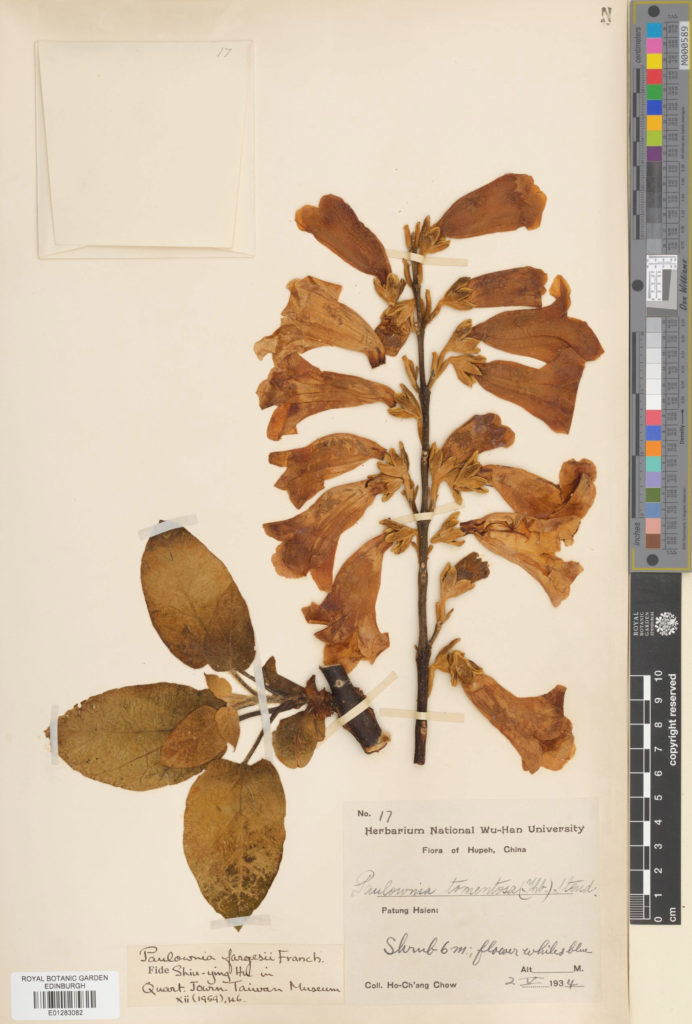The following blog was written by Rebecca Camfield a digitiser in the Herbarium.
Since 2021 we have increased our digitisation capacity with the goal of getting to 1 million specimens imaged by Autumn 2024. Each digitiser is assigned a family of plants to work through. This series of blogs will spotlight the families that have been completed by a member of the team.
Calceolariaceae, Stilbaceae and Paulowniaceae are small families within the Lamiales.
Calceolariaceae
Calceolariaceae is a small family of two genera, which was previously considered part of Scrophulariaceae. They are commonly known as Slipper flowers, slipperwort, pocketbook flowers or lady’s purse flowers. They are native to Central and South America, along the Andes and New Zealand.
Calceolaria ranges from Mexico down the Western side of South America to Argentina and Chile. It has been introduced to Brazil, Jamaica, and to Southeast Asia.
Jovella has an interesting distribution between Chile and New Zealand. Our collections need to be updated as specimens of this genus are still under Calceolaria.
We hold 882 specimens of Calceolariaceae in our collection, of which 51 are type specimens.
Top regions
| No. of Specimens | Herbarium Filing Region |
| 449 | Temperate South America |
| 269 | West Tropical South America |
| 8 | Central America |
| 6 | Nepal |
| 5 | Bhutan, Sikkim & Darjeeling |
We have a handful of specimens from most of the family’s range, including where it’s been introduced. It would be nice to boost our collections from Central America and New Zealand.
The digitisation of the family lead to a discovery of a previously unrecognised Darwin specimen in our collection.
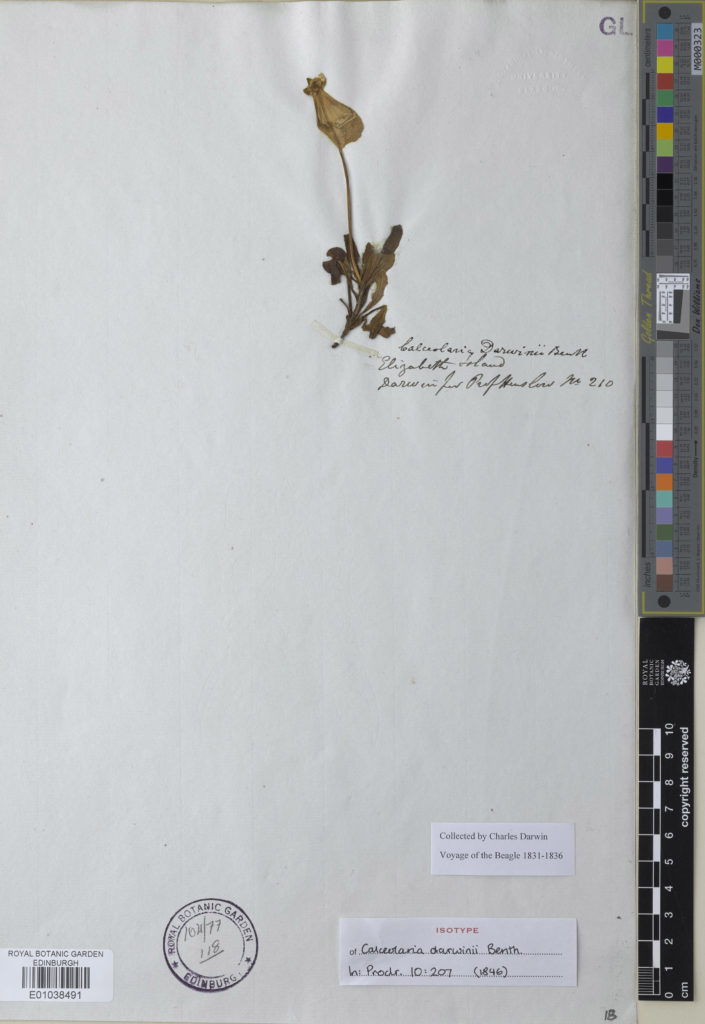
Stilbaceae
Stilbaceae is a small family mostly from the Fynbos region of South Africa, with some genera found in Madagascar, the Mascaerne Islands and up the East coast of the continent to southern Arabia. There are several monotypic genera such as Thesmophora, Charadrophila and Anastrabe. These are endemic to areas of the cape. The largest genus is Nuxia with approx. 50 species.
Many of the genera have moved from other families. Stilbe was originally in Verbenaceae, Nuxia in Loganiaceae, and several were moved from Scrophulariaceae (Halleria, Ixianthes, Bowkeria, Anastrabe & Charadrophilia).
They are a mix of strange shrubs and trees so common names vary.
We hold 297 specimens of Stilbaceae in our collection, representing 12 genera.
Top 5 Genera
| No. of Specimens | Genus |
| 127 | Nuxia |
| 61 | Halleria |
| 32 | Stilbe |
| 31 | Bowkeria |
| 23 | Anastrabe |
Top 5 regions
| No. of Specimens | Herbarium Filing Region |
| 184 | Southern Africa |
| 64 | Tropical Africa |
| 19 | Arabian Peninsula |
| 17 | Madagascar and Indian Ocean |
| 7 | Cultivated |
The larger genera in our collections have more recent collections than the smaller ones, with the majority of the collections are probably from pre 1930s.
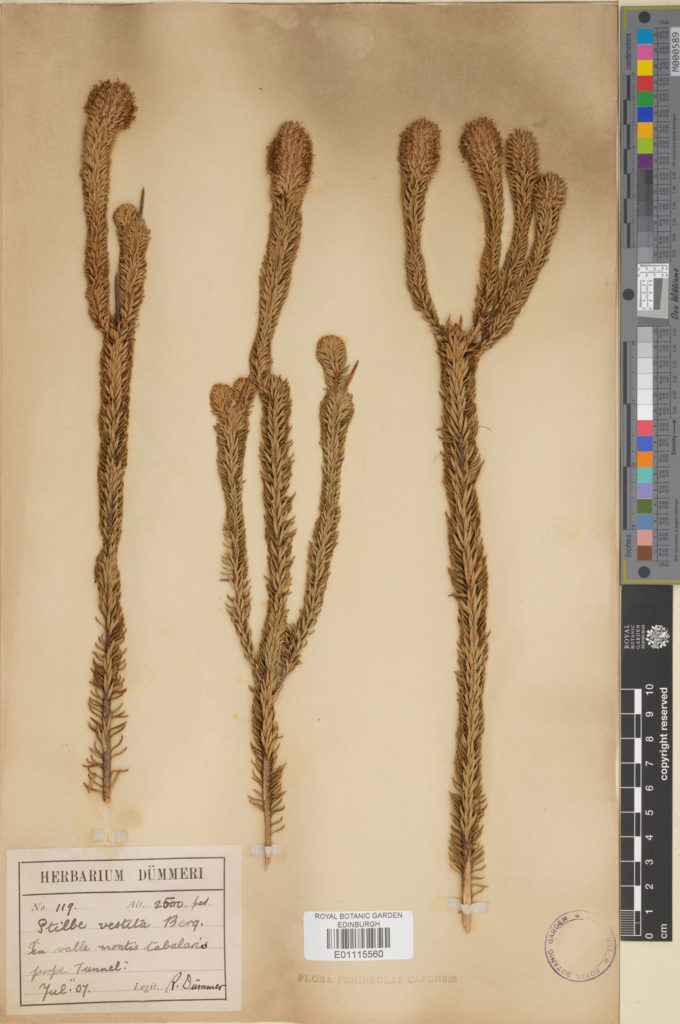
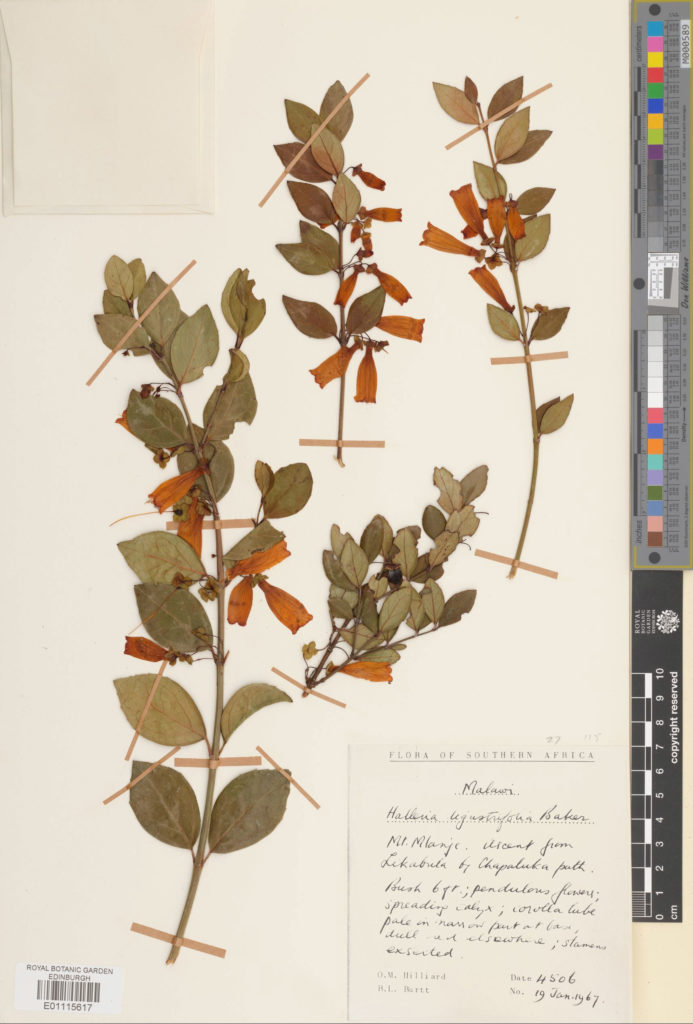
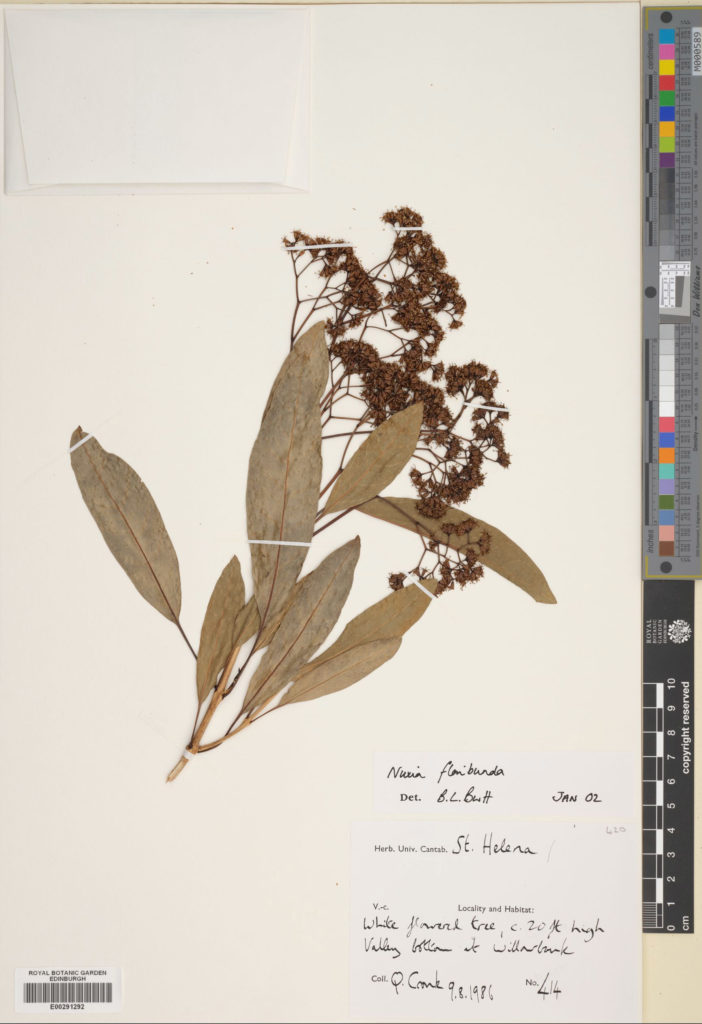
Paulowniaceae
Paulowniaceae is a small family, commonly known as the Empress Tree family. It has three genera:
Brandisia is native to China and the Indo-China peninsular. Whilst it is currently in Paulowniaceae, there is the potential for it to be moved to Orobanchaceae based on phylogentic studies. We currently hold 62 specimens.
Paulowinia is a native of the Korean peninsula and Eastern China through to Myanmar. It has been introduced to the United States, Europe, Turkmenistan and Uzbekistan. We currently hold 61 specimens.
Shiuyinghua: endemic to South central China. We currently have no specimens of this genus in our collection.
Specimens of Paulowniaceae can be viewed here.
Top 5 regions
| No. of Specimens | Herbarium Filing Region |
| 93 | Inner China, Korea and Taiwan |
| 8 | Cultivated |
| 7 | Indo-China |
| 5 | North America |
| 3 | Japan |
| 3 | Outer China incl. Tibet |
Our collections could better represent the family’s range outside of China.
